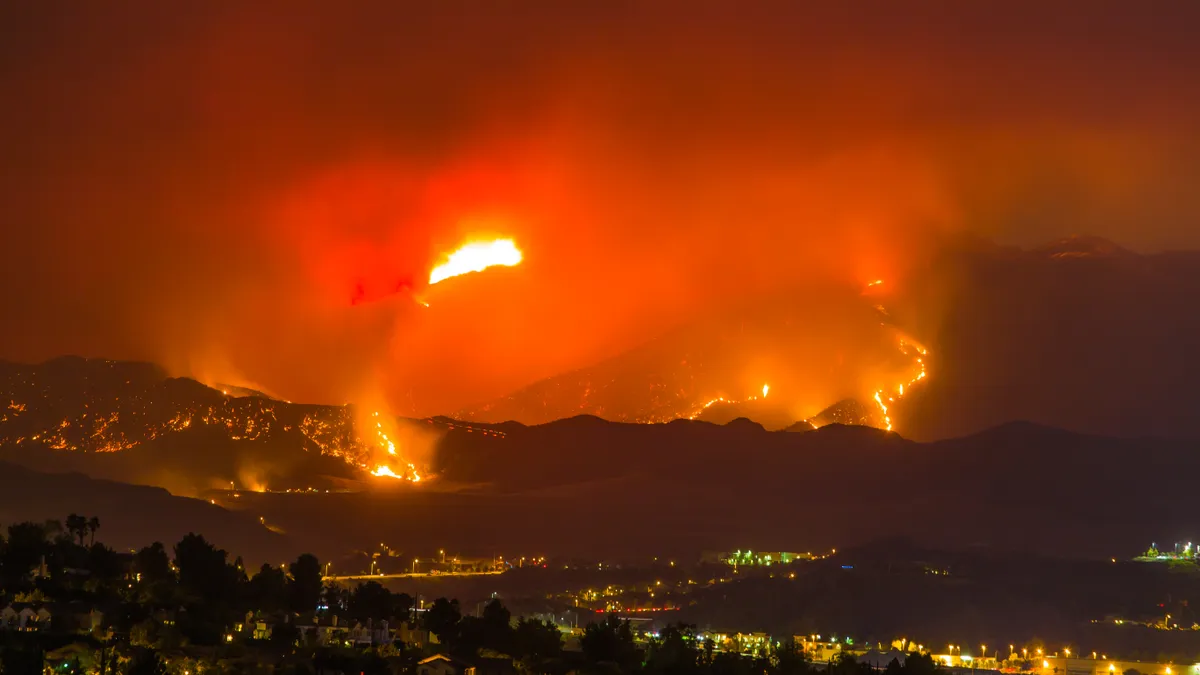Dive Brief:
- Pacific Gas & Electric filed a report Tuesday with the California Public Utilities Commission (CPUC) explaining its decision not to preemptively de-energize parts of its grid in early November, when high winds prompted it to warn customers of a possible Public Safety Power Shutoff (PSPS).
- But the utility ultimately decided wind speeds were decreasing and kept power on, leading to questions about the role its equipment may have played in sparking the deadly Camp Fire.
- The ongoing Camp Fire has killed 88 people and is the state's deadliest ever. PG&E could face billions in costs and liability if its equipment is determined to have started the blaze, and that would only build on the financial impacts of the 2017 fire season.
Dive Insight:
PG&E says it only preemptively shuts off power as a "last resort," but some are saying the utility should be more ready to take that action.
Frank Pitre, an attorney suing PG&E for customers affected by the Camp Fire, told The Mercury News that the report "confirms the obvious — they had the ability to shut down the power during weather conditions comparable to that preceding the start of the fire. ... PG&E has once again failed to learn from past history."
According to PG&E's report, on Nov. 6 and 7, the utility informed about 70,000 customers across parts of nine counties that it might need to de-energize parts of its system. But by the afternoon of November 8, 2018, "weather conditions had improved, and PG&E no longer anticipated the need to proactively de-energize."
Among the criteria PG&E uses to determine whether or not to call a PSPS: the forecast must call for sustained winds above approximately 25 mph and wind gusts in excess of approximately 45 mph. The utility's report said there were forecasts of "localized extreme weather" that met those thresholds.
The report is required by the CPUC whenever a utility initiates a PSPS, or warns it may need to implement one and then does not. PG&E cut off electricity service to nearly 60,000 people in October as a safety precaution, the first time it had taken such an action.
California's fires — and the role of PG&E and others — are the subject of scrutiny by the courts and legislature, too.
Following a conviction related to the deadly San Bruno gas pipeline explosion, PG&E is on probation. The utility's probation supervisor has called on the utility to answer questions about the latest round of wildfires.
Earlier this month, PG&E reported a second line fault in the area of the Camp Fire, stoking investor fears over a potential bankruptcy or reorganization of the company. However, a California lawmaker is expected to introduce legislation soon that would give the utility more financial stability as it deals with the extreme wildfires that have become California's new normal.
Amid all the damage, the state is looking for new solutions. The CPUC will host a "Wildfire Technology Innovation Summit" in March, where it aims to convene a range of stakeholders to "discuss the challenges of wildfires and tools that can help better manage these devastating disasters."















